How to Be a Good LGBTQ+ Ally Outside & on the Trail
Learn how to be a better LGBTQ+ ally and ensure the outdoors is inclusive to all with these tips.

Note from Kristen: My goal with Bearfoot Theory is to create an inclusive space where everyone feels welcome, regardless of who you are, where you’re from, what you look like, how you identify, or how much outdoor experience you have. As I’ve grown personally and in the outdoor space, I’ve gained a deeper understanding of the different experiences and challenges people face outdoors and realize how important it is to be able to see things from different perspectives and points of view in order to be more considerate and welcoming.
I can only write about my personal experiences, and as someone who identifies as a white, straight, cis-gender female, I wanted to share this piece written by Lettie Stratton, founder of Wild Wanderer, an outdoor adventure site for the LGBTQ+ community. In this blog post, Lettie sheds light on some of the challenges LGBTQ+ people face outside and how we can all be better allies in order to make the outdoors more inclusive and inviting for all.
Want to ensure the outdoors is inclusive for all? Read our tips below for how to become a better LGBTQ+ ally on the trail.
This post may contain affiliate links.
Tips for Being a Good LGBTQ+ Ally
Most people head out into nature when they want to get away from the stresses of daily life, relax, and connect with themselves and the outdoors. It can be a bit more complicated though if you’re a member of the LGBTQ+ community. LGBTQ+ adventurers face specific concerns when out on the trail, including fears for safety and acceptance — just to name a few.
Awareness of social issues seems to be at an all-time high and lots of people want to know what they can do to help support the LGBTQ+ community. One of the most helpful things you can do is learn how to be a good LGBTQ+ ally.
Educate Yourself
Being an ally is different than being acceptive or even supportive. Being a true ally requires you to be educated. Having awareness of the issues queer people face in the outdoors (and in general) is the first step.
Many LGBTQ+ adventurers fear for their safety in the outdoors – both physical and emotional. Pair a history of abuse and discrimination with an off-the-beaten-path locale and the fear of what might happen is enough to keep some would-be adventurers in the safety of their own homes.
Feeling welcome and accepted is another fear for queer folx wanting to enjoy the outdoors. Because the outdoor industry is most often depicted through a white, cisgender (cisgender refers to people whose gender identity matches the sex they were assigned at birth) lens, it can take a bit more for people who don’t fit that mold to feel welcome.
Whether it’s worrying about being misgendered, wondering if it’s safe to swim in a not-cis body, encountering homophobia in the wilderness, or something else entirely, there is often a myriad of thoughts running through an LGBTQ+ person’s head as they prepare to hit the trail.
Showing up for an annual Pride parade is great, but true allyship requires more. True allyship asks you to be aware of these issues and to do your part to make everyone feel safe and welcome. Perhaps most importantly, true allyship asks you to speak up and speak out in the face of discrimination if needed.
For further education on allyship for the LGBTQ+ community in general, check out The Trevor Project, The Venture Out Project, GLAAD and Human Rights Campaign.
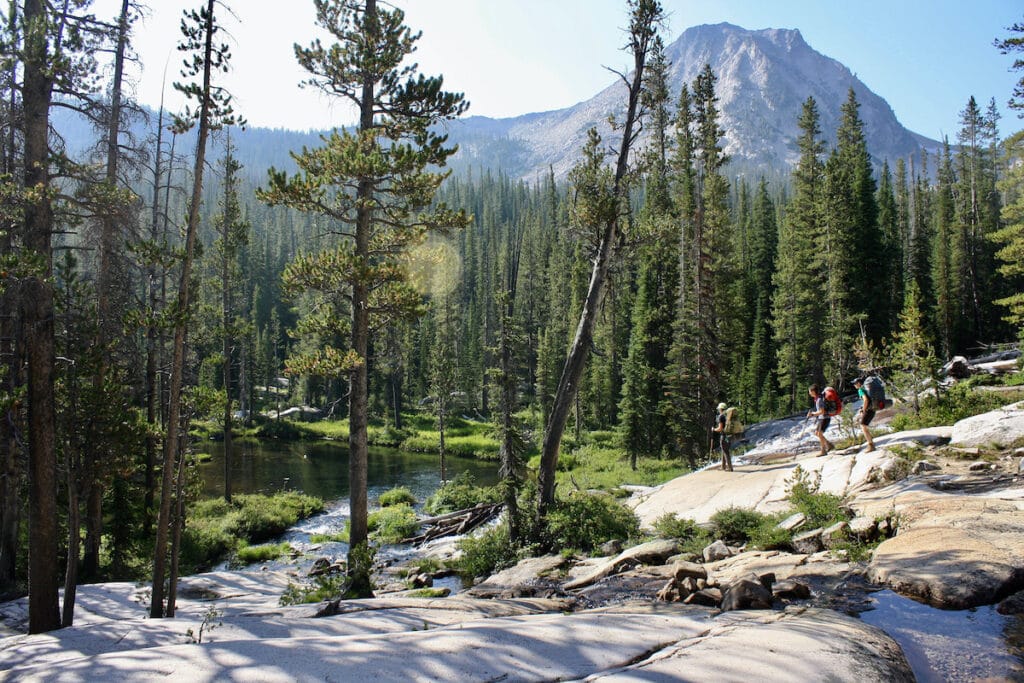
Be Friendly
One of the easiest things you can do as an ally to LGBTQ+ people in the outdoors is simple: Be friendly to everyone you pass on the trail. Remember, people don’t know whether you’re friend or foe – especially LGBTQ+ people who might be on high alert in a wilderness setting.
Since you never know who might be in need of a boost and an extra sense of feeling welcome, whether they happen to be a part of the LGBTQ+ community or not, why not go out of your way a bit to be super friendly to everyone you see? A smile and a simple hello can make all the difference.
Being friendly really comes down to showing respect for all those who you pass on the trail. Don’t gawk, point, or whisper if you see someone or something that’s different from you and your experiences. This sounds ridiculously simple but it can really go a long way in helping everyone feel welcome.
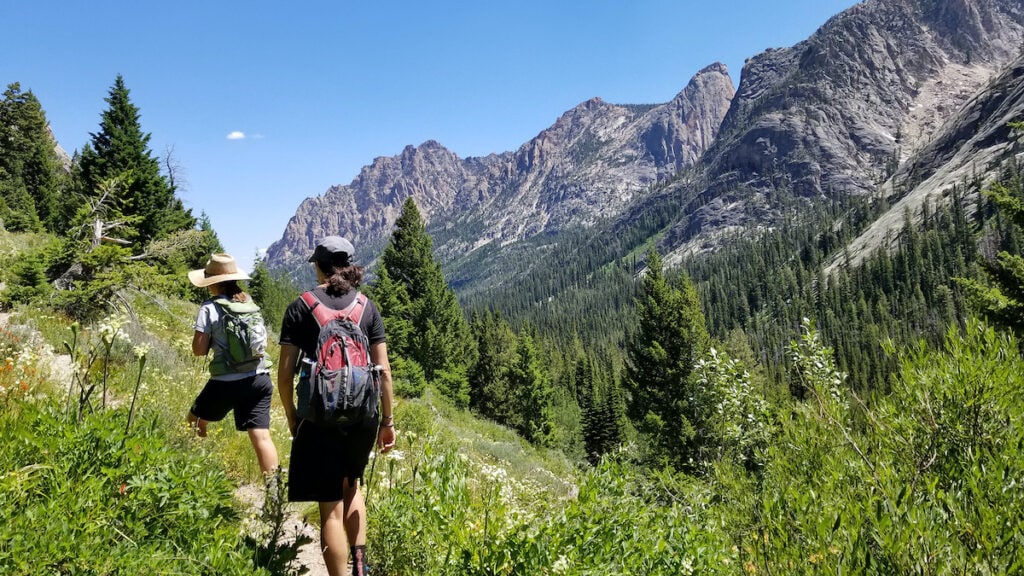
Avoid Gendered Language
Thinking about how language impacts the people around you is one of the most important things you can do as an ally. What seems like a friendly greeting or a nod of encouragement to you may actually be offensive to someone you pass on the trail.
Operate under the assumption that you don’t know anyone’s gender identity – because you don’t! Because of this, it’s best to steer clear of gendered language when passing strangers on the trail.
Instead of saying “almost there, girl!” or “what’s up, man?”, just drop those gender-signifying words and say “almost there” or “what’s up.” Your friendliness level will remain the same, and you don’t have to worry about misgendering someone. It’s a win-win, and an essential adjustment for allies to make.
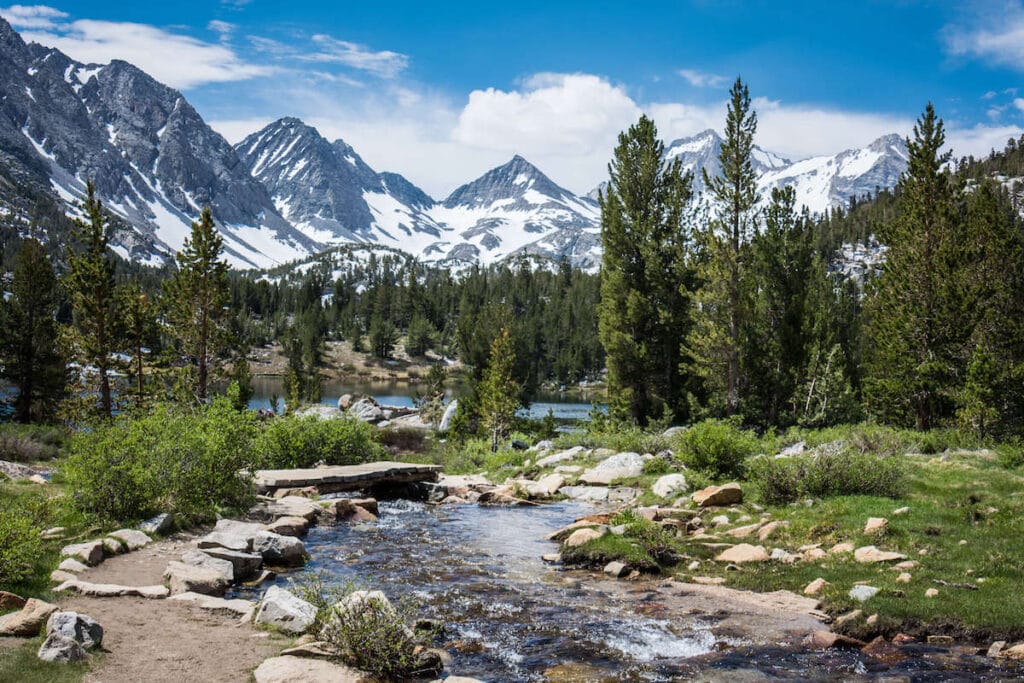
Use Correct Pronouns
This is a big one. It is hugely important to respect other people’s pronouns. Using someone’s correct pronouns is one of the key ways to show your respect for their identity and make them feel seen.
He/him/his, she/her/hers, and they/them/theirs are all examples of pronouns. There are certainly more out there, but these are the most common. Be careful not to assume someone’s pronouns based on what you perceive their gender to be because they may identify differently.
If you don’t know someone’s pronouns, just ask! Better yet, share your own name and pronouns when introducing yourself. This can help make queer people feel safe to share their own pronouns in return.
Once you do it a few times, it’s really not hard and is one of the things the queer community often appreciates most in an ally. “Hi, my name is Tom and my pronouns are he/him” is a quick and easy introduction, and signifies your allyship right away.
If you misgender someone, know that everyone makes mistakes sometimes and just correct yourself and move on. Don’t go into a long, drawn out apology, as this puts the focus on you and makes the person you misgendered feel they have to say “it’s okay” and comfort you.
For more education on this topic, check out A Quick And Easy Guide To They/Them Pronouns.

Don’t Make Assumptions
Just like you shouldn’t assume anyone’s gender identity or pronouns, you also shouldn’t assume whether people are a couple, friends, siblings, or whatever. If I had a dime for every time someone asked my partner and I if we were sisters… spoiler alert: it doesn’t matter, and it doesn’t feel good when people assume an incorrect conclusion.
These assumptions rarely come from a place of malice, but they do cause harm. Being more aware of the assumptions we make about people and voice aloud is a good practice even outside allyship.
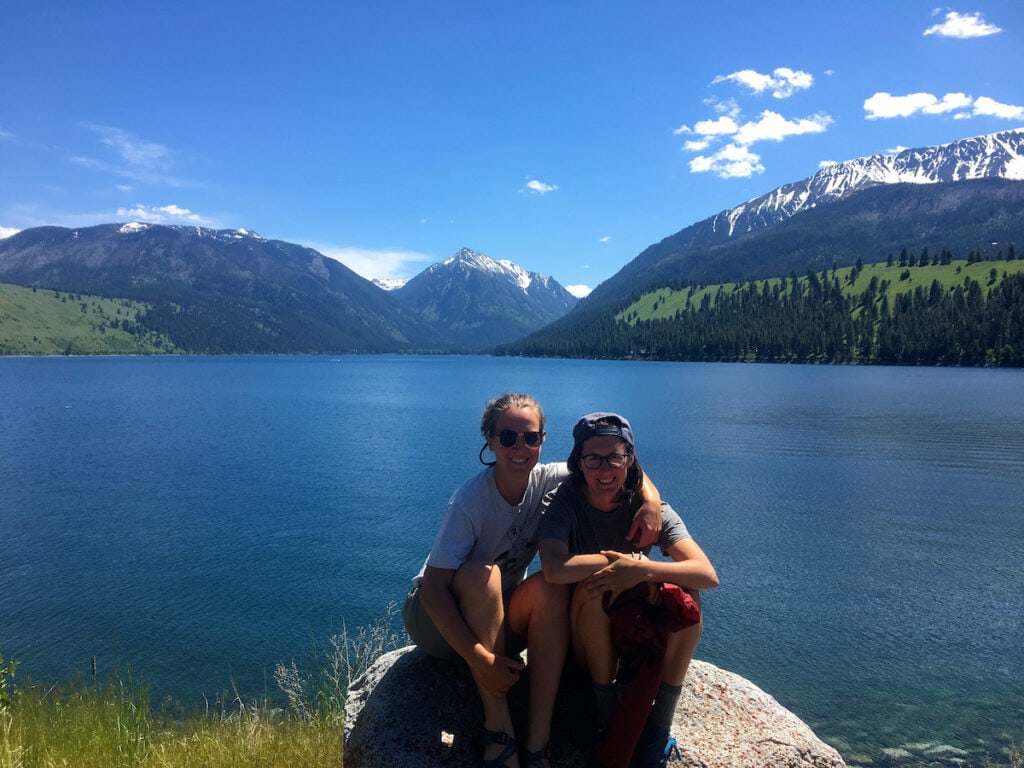
Save this post!
Enter your email & I'll send this post to your inbox! You'll also receive my weekly newsletter full of helpful advice for planning your adventures.
Advice for Outdoor Recreation Planners and Leaders
If you’re in a position of leading outdoor recreation trips or planning facilities in the outdoor industry, there are big ways that you can make an impact.
A couple things to consider are:
- Are there gender-neutral bathrooms and changing areas on site?
- Have I prepared ways to split my group up other than “boys in one group, girls in another”?
- Have I talked to my group about how to be a positive and welcoming presence on the trail?
- Have I organized gear by size instead of splitting it up into men’s and women’s?
These are just a few questions to get you thinking about how to be an LGBTQ+ ally and lead by example.
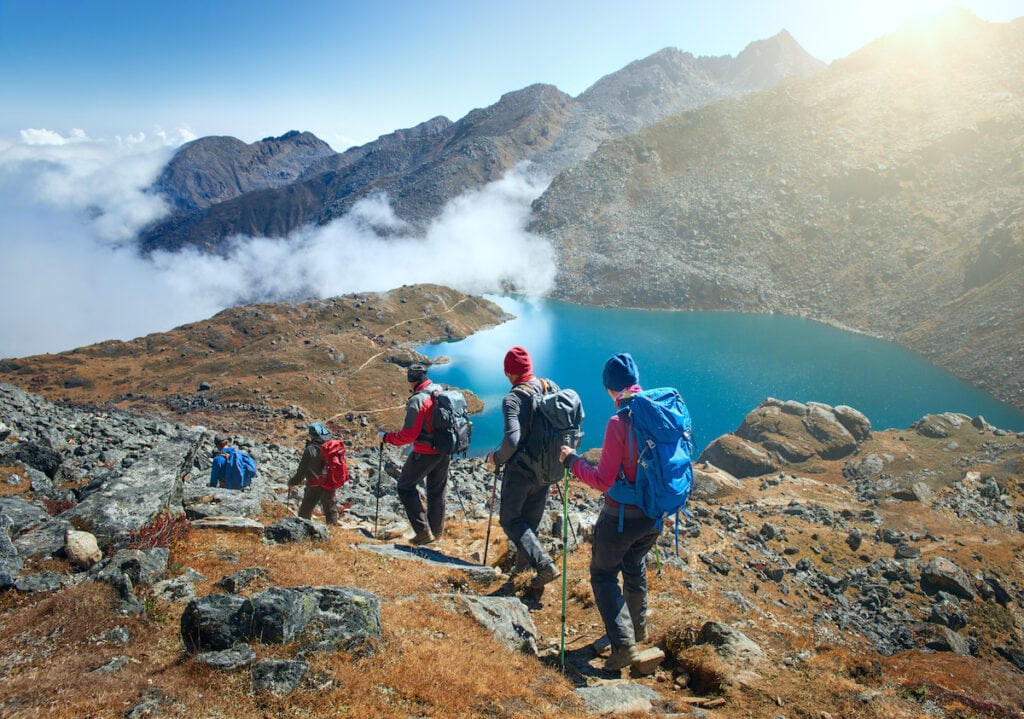
Final Thoughts
Taking the time to learn how to be an LGBTQ+ ally is one of the most important steps you can take to support the LGBTQ+ community and ensure the outdoors is truly for all. Allyship isn’t complicated, but it does require some up front learning and a lot of awareness of your own behavior and the behavior of others.
Imagine if every outdoor adventurer learned allyship at the same level of importance as learning how to take care of your gear and Leave No Trace. Allies can learn from each other, learn from the queer community, and learn by practicing. Connect with other allies. Connect with and listen to LGBTQ+ members of the outdoor community. There’s no better time to start than now.
How will you ensure the outdoors is an inclusive space for all? Leave us a comment below!

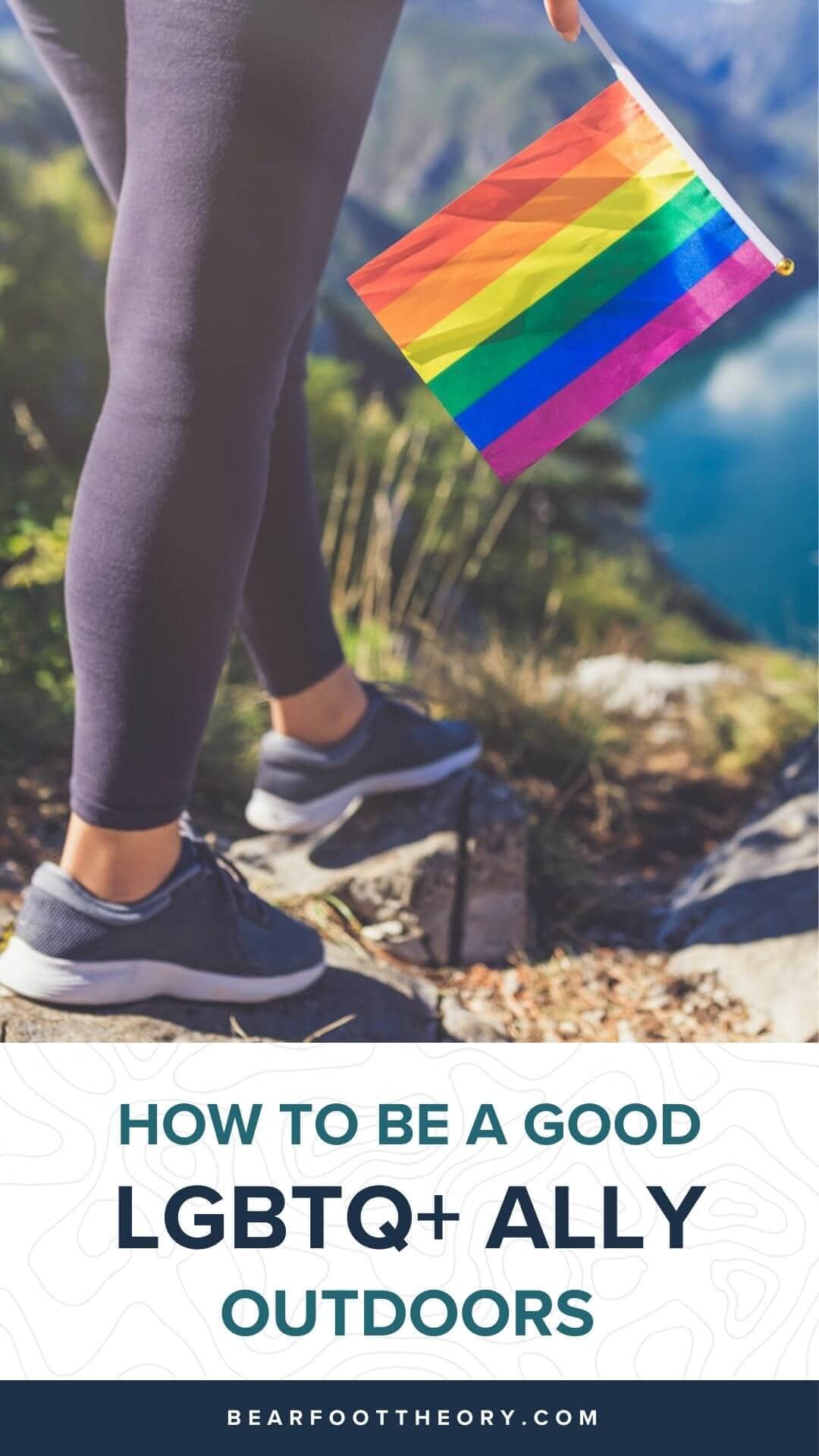
“Imagine if every outdoor adventurer learned allyship at the same level of importance as learning…” This was and so important to the outdoors! Thanks for taking the time to write this really important piece!